How to choose the right WMS software?
WMS software
Logistics
Supply Chain
October 10, 2024

Finding the WMS that suits you is not easy.
It should not take too long to implement and it is preferable that its installation is not too taxing for the teams. Added to this is the development of the company's activities over the long term
It is also essential that it is sufficiently the company's other software Finally, the first benefits must be visible and felt as soon as you settle into the company.
The 10 main WMS providers in France offer, at first glance, relatively similar products. So, how can you tell the difference and be sure you’re making the right choice? What are the criteria that will make the difference for your company and its organization, and what criteria should you take into account in your choice?
Here are 3 ideas to help you choose your future WMS .
Formulating your needs to choose your WMS
It is not uncommon to hear that in 100% of cases of WMS project failures, the specifications were non-existent . Given that it represents a large volume of documents to be produced (between 30 and 80 pages depending on the case, for approximately 10 to 30 days of time to spend to produce it), it can indeed be tempting to want to do so. 'economy….
And yet, it is essential to define your needs and not to constrain yourself and lock yourself into solutions. But, how can you properly define the functional scope of your future WMS and the constraints of its environment?
Examples of specifications may be freely available on the web, but with more than 250 typical functional requirements, it will be difficult to find the perfect model for your organization. To make matters worse, some of these needs are particularly difficult to understand if the logistics concepts underlying each WMS are not mastered: logistical attributes of an item, control of samples, importance or not of having real time, consequence of a partial shipment, difference between kitting and manufacturing, dimensions and pre-packing…
Our advice:
If you are looking for a solution adapted to your needs and your organization, we recommend that you rely on an integrator service provider who ideally has internal teams from the field. They are thus able to quickly identify what makes you specific. Some service providers offer to spend a day in your warehouse to carry out a flash audit in order to provide you with a pre-budget along with an estimate of the immediate benefits of a WMS solution. These elements will allow you to carry out a brief calculation of return on investment and to justify to Management a budget adapted to the challenges. The purpose of this stage will be to present to you a WMS investment project as an additional rope to the company's development strategy.
The quality of functional coverage to keep your WMS as long as possible
When choosing your WMS, it is essential to think about the sustainability and evolution of your solution. Once installed in the warehouse, it is not easy to change WMS when it reaches the limit of its functionality.
Indeed, a WMS is at the heart of company flows :
- Orchestration of incoming, internal and outgoing physical flows,
- Pilots operations under constraints using thousands of algorithms,
- Manipulation of information in real time allowing, for example, to validate the conformity of a receipt, to know its exact stocks in a localized manner, to inform the sales administration of a critical shipment, or to initiate invoicing to a customer.
The WMS therefore manages a great complexity of overlapping physical and information flows with financial flows as the key. It is therefore important to ensure that the WMS can adapt to new legislation, the arrival of a new range of products, a new customer, or even new distribution channels.
Our advice:
We recommend choosing a vendor that has a wide range of customers and across different industries, ensuring that future needs are likely to be covered by the standard version of the WMS.
Another positive signal is the level of turnover invested each year by the publisher in R&D to improve its product. You can therefore clarify the portion of the workforce dedicated to these innovation and solution development activities. Finally, because it will never be able to do everything, it is relevant to ensure that its future WMS is open and connectable to solutions provided by third-party specialists in their field (TMS, CMS, OMS, ERP, WCS, etc.) . To do this, find out to identify the publisher's partners (IT and Infra) , and find out what types of applications have been developed in the past.
The ability to blend the WMS into the company's technical and IT environment
One of the most complex points of any WMS project is its integration into the business environment. It is “a project within a project” and very often the critical path of WMS implementation. The work that will need to be carried out, for example, to create a VPN (Virtual Personal Network) or interface with an existing ERP (mapping), should not be underestimated. Indeed, several pitfalls and obstacles can present themselves on the road to success.
Concerning, for example, the IT service provider who will be mandated to develop the interfaces:
- Is its load schedule compatible with that of the WMS project,
- Has he already interfaced with a WMS ?
- Is he able to offer on-call support during the first days of startup?
On exchanges between an ERP and a WMS:
- Is the data already present of good quality (accuracy or completeness)?
- Is their format compatible with WMS?
Our advice:
A WMS integrator must be able to present examples of interfacing with numerous systems and demonstrate their ability to manage IT projects of this type:
- Precisely describe different data formats that will need to be exchanged,
- Manage, advise and challenge the IT service provider who will be responsible for developing the interfaces,
- Surround yourself with third-party partners specializing in IT infrastructures to, for example, create and manage a full web Virtual Machine, implement a VPN or configure Android terminals.
Most read articles
WMS software
Logistics
Supply Chain
November 7, 2025
Go beyond the ABC method: How a WMS refines your inventory management strategy?
In logistics, the ABC method is a classic. But here's the hard truth: in the age of e-commerce, relying solely on a static ABC analysis is like trying to win a Formula 1 race without the right car. The problem isn't the method itself, but treating it as an immutable truth set in stone once a year.
WMS software
Logistics
Supply Chain
October 31, 2025
Packaging optimization: How does your WMS save you money on transported "empty space"?
Empty space represents, on average, 57% of the volume of packages shipped in e-commerce. It's not just wasted space; it's money gone up in smoke. In this article, we'll analyze how a WMS platform can become the ultimate weapon against empty space.
WMS software
Logistics
Supply Chain
July 3, 2024
Inventory management using WMS software
To master your inventory management, it is imperative to use suitable and efficient inventory management software. With this automation, you can monitor the status of your inventory in real time, allowing you to make informed and rapid decisions to avoid stock-outs or overstocks.

















